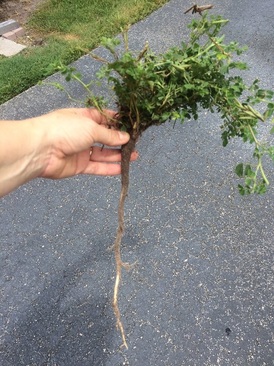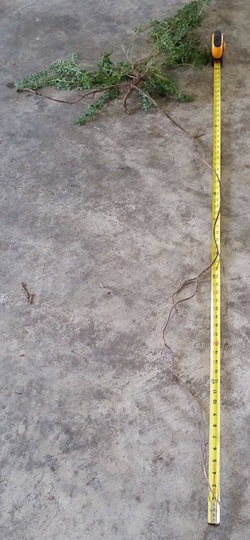The tap root :
Creeping Indigo has ONE, centralized tap root. The root is carrot-like in shape and texture and can grow up to SIX feet deep- often zig-zagging and tapering toward the end. The zig-zagging pattern of growth helps to lock the root in the soil making it impossible to pull-out by hand. You would have to dig up the root but, any reminiscence of the root left behind will sprout a new plant. So, the best practice is to kill it with two applications of a quality legume herbicide and allowing six weeks for the root to die. (Please, see the How To Kill It section for more info)
CI grows in sub-tropical climates and can be killed by low temperatures however, the root can survive the Winter unless the freeze surpasses it's depth. (Up to 6ft deep) Therefore, it will sprout again from the still viable root in the just a matter of time.
CI grows in sub-tropical climates and can be killed by low temperatures however, the root can survive the Winter unless the freeze surpasses it's depth. (Up to 6ft deep) Therefore, it will sprout again from the still viable root in the just a matter of time.



